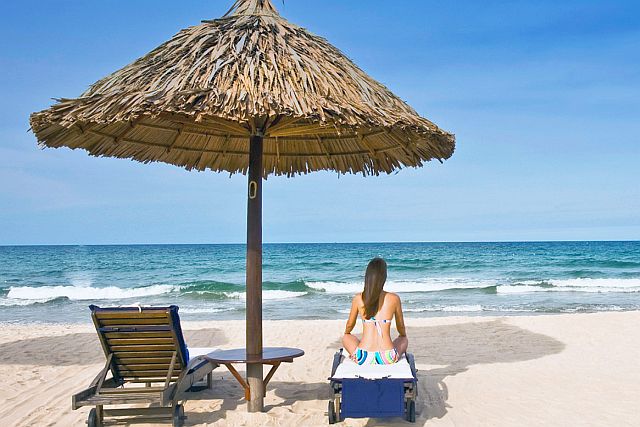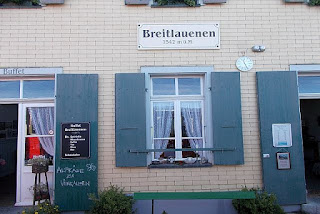 |
| Linh Ung Pagoda -- the 220-foot white statue of the Goddess of Mercy is the tallest deity sculpture in SE Asia (Taylor) |
Not any more.
Those same
"boomers" later provided most of the military forces in Vietnam
 |
| Monkey Mountain is a favorite spot for everyone (Taylor) |
What is amazing
since those days during the 20th century is the resilience and economic
durability of both Japan and
Vietnam
Danang is the
fourth largest city in Vietnam Han
River , today Danang thrives that is destined to become a major
tourist destination during the next decade.
 |
| My Khe Beach is better known as "China Beach" (mykhebeach.com) |
Already major hotel
chains and casinos are adding properties in preparation for the influx of
Vietnam vets and their families who will return to a far different environment
than they knew a half century ago.
Easily accessible
by land or sea, Danang is within 60 to 70 miles of several UNESCO World
Heritage sites, making it an easy destination to use as a base for touring Vietnam
 |
| Temple on Monkey Mountain (Taylor) |
Danang is known by
several names but the best known refers to the Han River
estuary which is generally a Vietnamese adaptation meaning "opening of a
large river."
Danang proudly
boasts of six masterpiece bridges throughout the city, including the Rong
(Dragon) Bridge, the Thuan Phuoc, the country's longest
cable-stayed bridge and the
Song Han (Han River ) Bridge.
The Song Han is Vietnam
 |
| Dragon Bridge is one of six masterpiece bridges in Danang (wikipedia) |
With such architectural credentials, Danang is justifiably
known as "the city of bridges."
Travelers and locals alike love to
gather at the one-of-a-kind Dragon
Bridge
 |
| Lions and dragons are popular subjects for statues (Taylor) |
Most of the bridges are relatively new,
adding further emphasis to the budding economy and Danang's popularity as a
travel destination.
Just across the road from beautiful My Khe
Beach, better known to Americans as China
Beach
 |
| My Khe Beach at dusk is more tranquil than it was 50-years ago (mykhebeach.com) |
The onetime French facility was a major
base for the United States
 |
| Danang Air Base still exists but soon it will home to luxury hotels (wikipedia) |
Visitors hoping to view that landmark need
to hurry however, because it won't be long before it becomes the home for massive
elegant beachfront hotels.
 |
| Reminders of the war (commons wikimedia) |
In that sense, this is one aspect of Danang's
history the Vietnamese will happily erase from their memories.
Not far from the city center, Non Nuoc
Beach Vietnam
 |
| Non Nuoc Beach is another popular spot to soak up the sun (vietnamguide.com) |
Just south of Danang the rocky
limestone outcroppings of the Marble Mountains offer hiking paths leading to forested
cliffs with stunning views of Non Nuoc Beach
and the South China Sea .
 |
| The Marble Mountains dominate the landscape (wikipedia) |
Even more dynamic are the cliff caves
that were once occupied by Cham people and later, several interior pagodas that
were build during the Nguyen Dynasty.
To avoid the heat of the city, another
popular retreat for locals and visitors alike is Son Tra (Monkey) Mountain.
Just 35-minutes by car, Monkey
Mountain
 |
| The impressive Linh Ung Pagoda (Goddess of Mercy) (Taylor) |
Hailed as the tallest statue of the deity
in Southeast Asia , the main attraction is the
Linh Ung Pagoda. The 220-foot white female sculpture of the Goddess of Mercy
stands atop a lotus-shaped platform featuring 17 levels inside with 21
miniature Buddha statues.
 |
| Two dragon sculptures line the stairs at Monkey Mountain (Taylor) |
Entrance is free, but plan ahead
because it does become extremely crowded during special events.
 |
| The Lucky Temple is part of a cave system once inhabited by the Champa Kingdom (wikipedia) |
Venturing approximately 40 miles west
from Danang, My So'n is a thousand year old archaeological site situated in a
remote forested area that once contained more than 70 temples and stupas.
The onetime capital of the Champa Kingdom
 |
| Exotic temples are a hallmark of Danang (Taylor) |
Time was, not so very long ago, that
the mention of Vietnam often
sent young American men to Canada
Now, half a century later, Vietnam



































